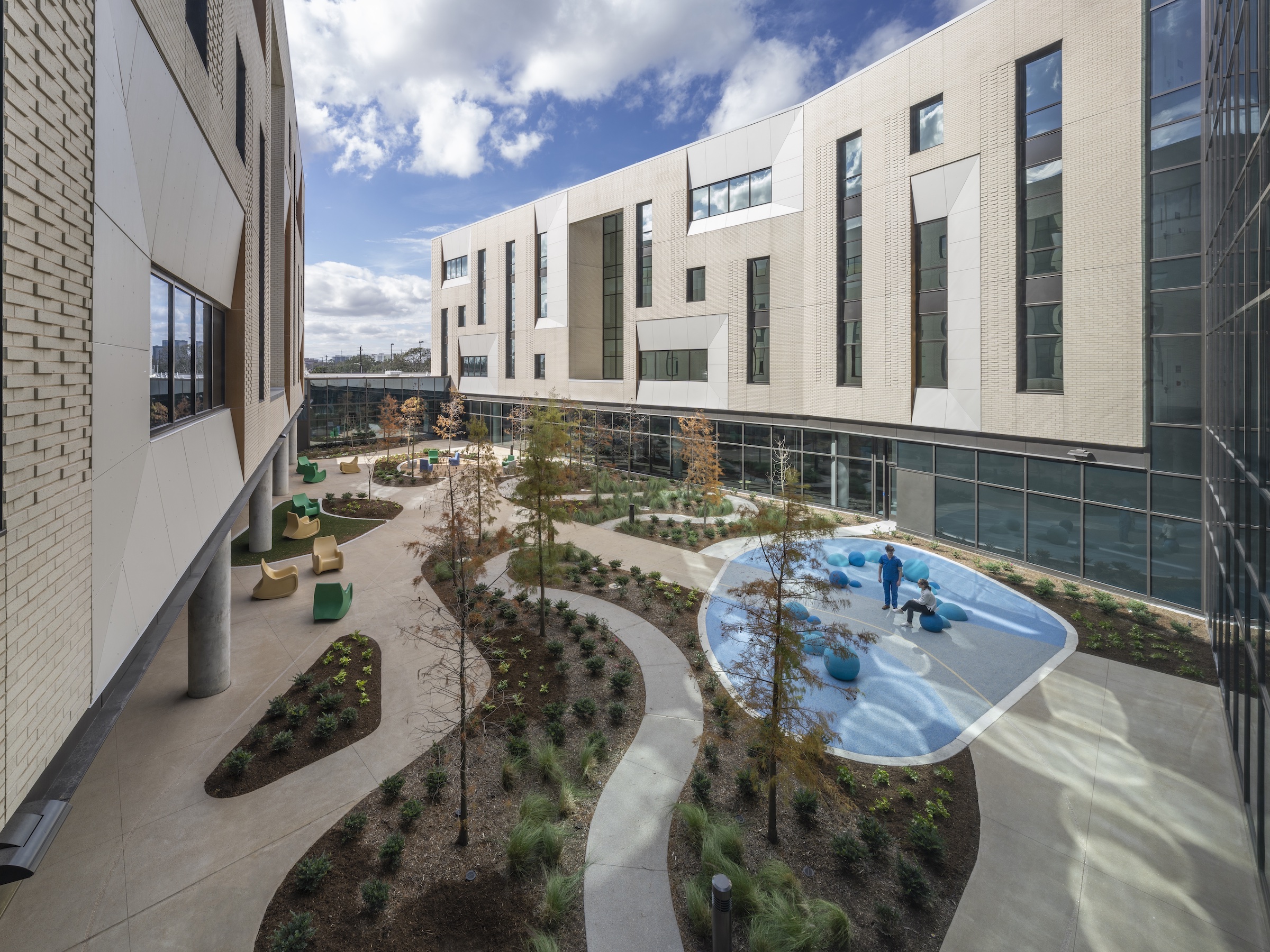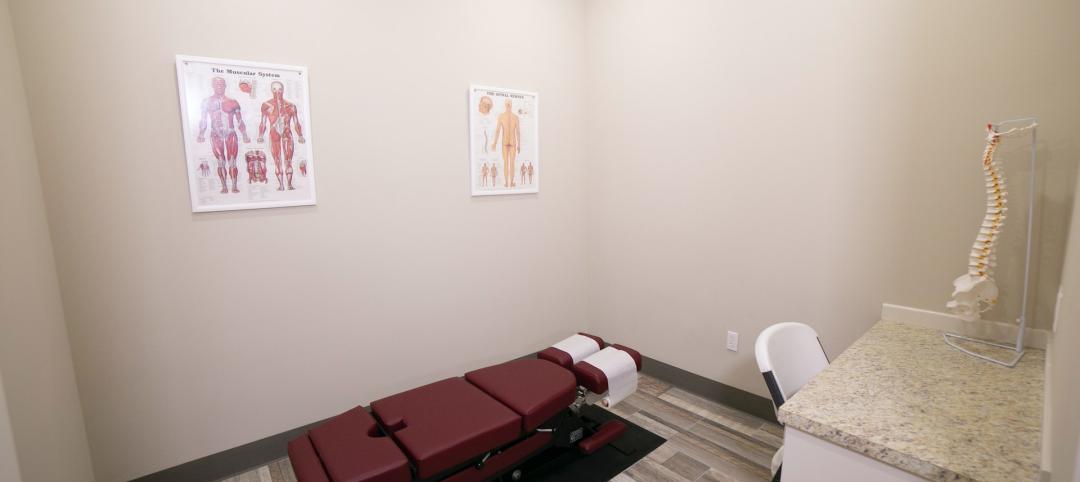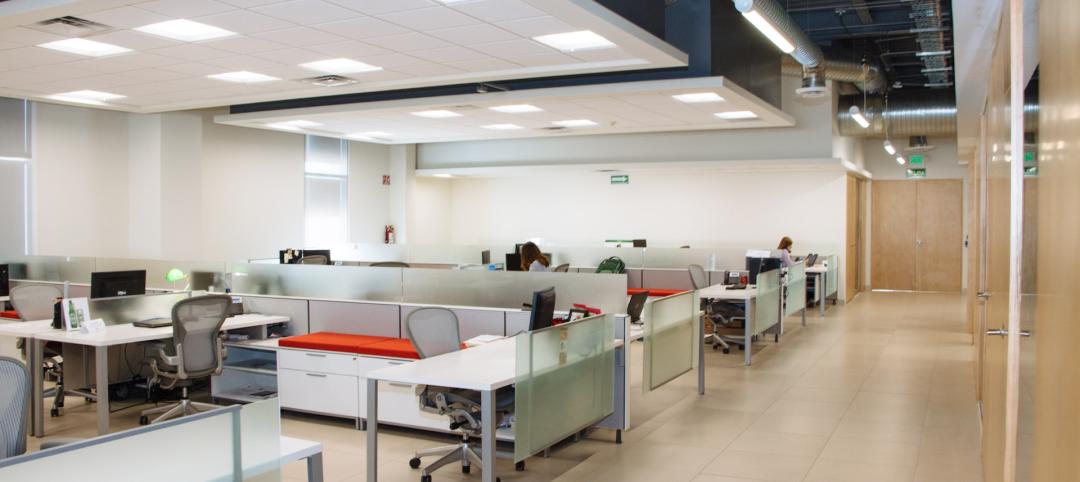Two-fifths of the more than 488,000 people who live in Knox County, Tenn., deal with some sort of mental health breakdown, according to a recent report by the Mental Health Association of East Tennessee.
In late October, the Knox County Commission, along with County Mayor Glenn Jacobs, urged the state to provide financial support for the construction and operation of a mental health hospital for residents who currently need to travel two hours to the nearest mental health facility in Chattanooga, one of four mental health hospitals in Tennessee, whose Department of Mental Health is already investing more than $20.5 million annually for critical behavioral health community services in Knox County.
Knox County is symptomatic of a national dilemma. Nearly 50 million Americans adults, 20% of the country’s total, experienced mental illness in 2019, the latest year for which data were available, according to “2022 State of Mental Health in America,” published by Virginia-based nonprofit Mental Health America, which has been addressing the needs of people living with mental illness since 1909.
Fifteen percent of younger Americans had a major depressive episode within the previous year, and nearly 11% cope with severe depression. Just under 5% of adults have had serious thoughts of suicide, which has been increasing since 2011. More than half of adults and more than 60% of youths with mental illness don’t receive treatment.
Mental Health America’s estimates roughly correspond with those of the National Institute of Mental Health, which estimates 52.9 million adults in 2020 were living with mental health issues. NIMH found the prevalence of mental illness was highest among 18- to 25-year-olds, females, and adults reporting two or more races.
Last July, a national 988 Suicide Prevention hotline went live, supported by a network of over 200 24/7 crisis centers. As of late November 2022, 23 states have enacted legislation in support of the new number. Mental-health teletherapy services are also cropping up, despite uncertainties about insurance reimbursement for telehealth and mental healthcare in general.
Burgeoning demand for behavioral health facilities
While there are varying degrees of mental illness based on levels of functional impairment, the steady rise of Americans struggling with mental health problems coincides with the emergence of outside stress factors that include the coronavirus pandemic, substance abuse, social isolation, and a volatile economy and job market.
The rise in mental disorders has prompted an increase in demand for new behavioral health facilities and hospitals, according to AEC firms like CannonDesign, which claims to be the first design firm to set up a practice/studio dedicated to mental and behavioral health. As of last October, CannonDesign was working on the designs for no fewer than eight mental health-related projects in North America, say the firm’s mental and behavioral health co-leaders Shary Adams, AIA, ACHA, EDAC, LEED AP, and Tim Rommel, AIA, Principal.
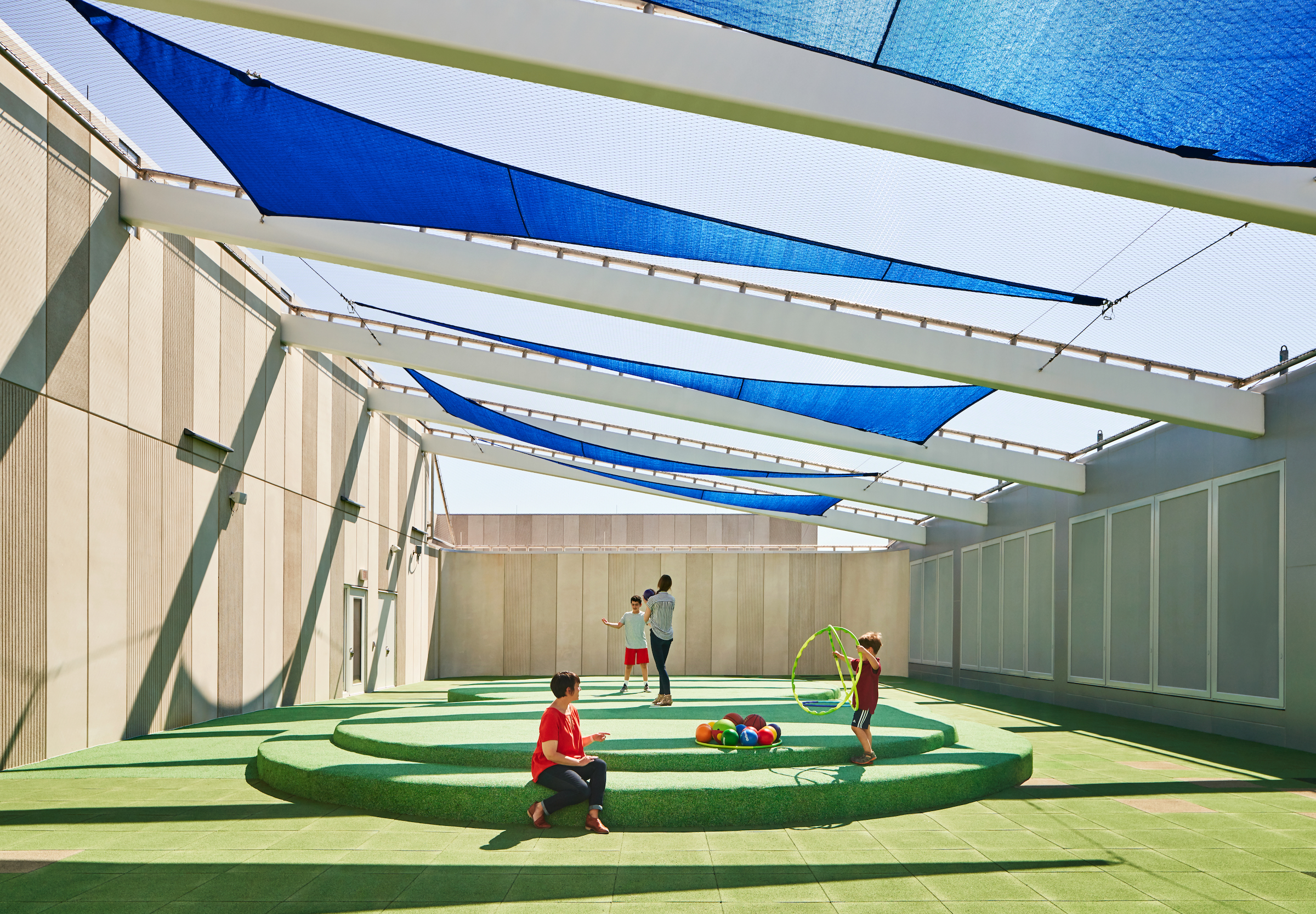
Between 1980 and 2017, Troy, N.Y.-based Architecture Plus typically did one large mental health project per year, for which it performed design, planning, and programming. In 2018, that number jumped to seven, in 2019 and 2020 it did three or four each year, and in 2021 seven, according to Francis Pitt, FAIA, FACHE, OAA, Architecture Plus’ founder and Principal. Half of these projects are under construction.
The architecture firm HED recently bid on a $325 million, 180-bed mental and behavioral health hospital in Michigan that is being funded in part by the American Rescue Plan Act (ARPA). “Three years ago, we would have never seen a mental health project this large,” says David Jaeger, AIA, LEED AP, EDAC, the firm’s Principal and Healthcare Practice Leader.
In the past, the general contractor J.E. Dunn Construction might have been building one mental health facility at a time; now, “it’s multiple projects for multiple clients,” says Jonathan Vande Krol, Senior Project Manager, whom BD+C interviewed with the firm’s Project Executive Shelly Koehler.
Several AEC sources contacted for this article confirm that what gets built often depends on a state’s commitment to funding mental healthcare. Hospital systems have had to be creative about how to pay for new construction, renovation, and operations, says Jaeger. And that has meant tapping the private sector and donors.
An $89 million inpatient Behavioral Health facility, designed by HDR, was scheduled to start construction in late 2022 on the campus of Immanuel Medical Center in Omaha. Spearheading the fundraising for this 103,500-sf facility, which will have 38 beds for children ages 5 through 18, is the Mental Health Innovation Foundation, led by its president Ken Stinson, the former Chairman and CEO of the construction firm Kiewit Corporation. Between $15 million in $16 million are expected to come from ARPA.
“Society is realizing that you can’t ignore mental health, and there’s been more emphasis on this since the pandemic,” says Rommel of CannonDesign. He and other AEC sources speak of mental health facilities as being part of a “continuum of care.”
Behavioral health facilities for different patient groups
New behavioral health facilities are needed to relieve stress on emergency departments and urgent-care centers that, because of a shortage of hospital beds, are being “ambushed” by the sheer number of patients with mental or behavioral issues, says HED’s Jaeger. Construction and renovation projects are also expanding emergency departments to incorporate mental healthcare.

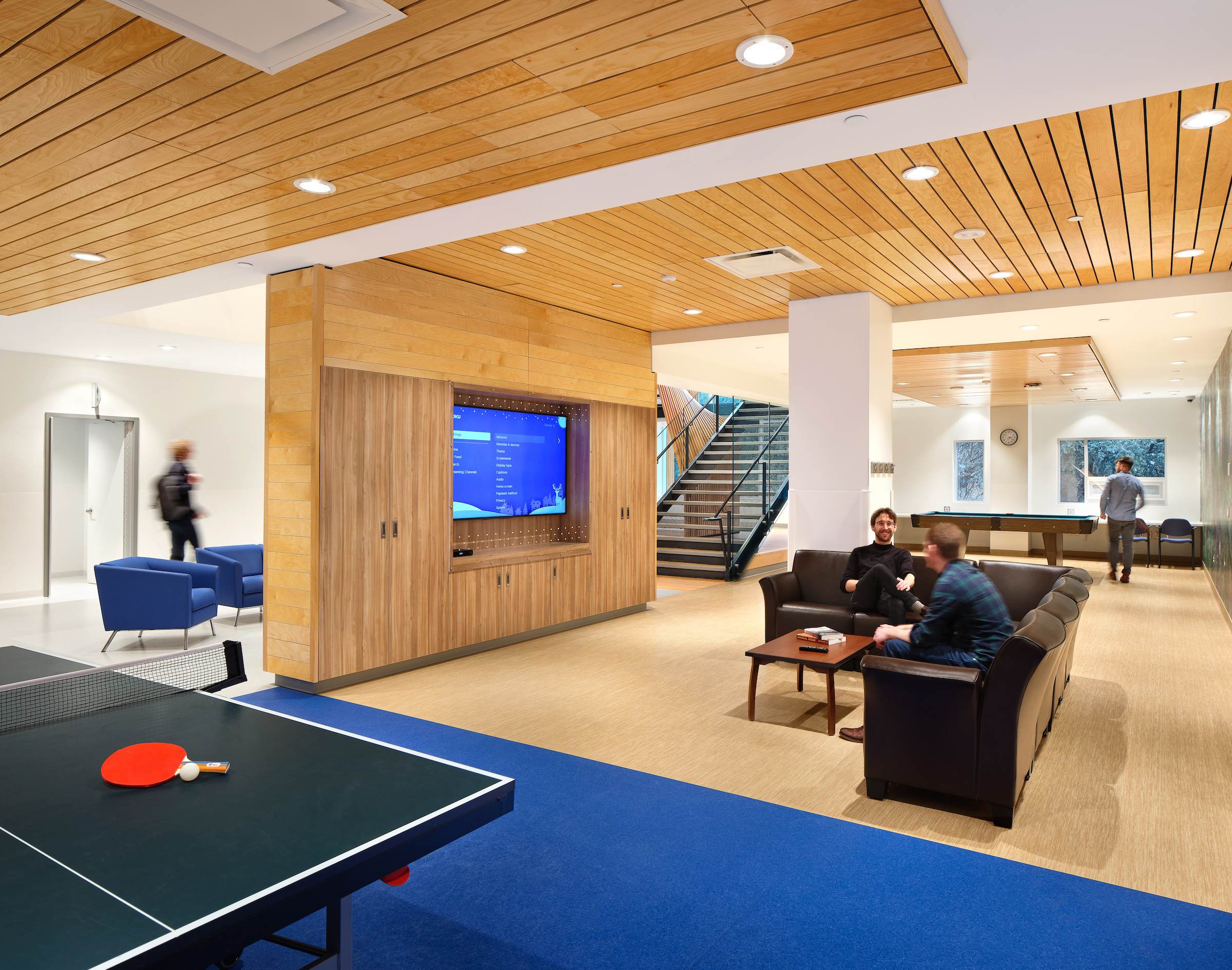
“Clinics designed now are more integrated than they were 10 years ago,” observes Anindita Mukherjee, AIA, ACHE, LEED AP, Associate and Healthcare Planning Director for the firm LEO A DALY. “The planning criteria and layout are more thoughtful [about] the relationship between safety and wellness.”
Among the industry sources who are seeing more projects with greater attention to pediatric behavioral care is Diane Davis, AIA, LEED AP, Managing Director, Principal and Healthcare Practice Leader for Perkins&Will in Houston. She points specifically to Texas Children’s Hospital, which is expanding its mental and behavioral health services across its departments, including those focused on pediatric and adolescent care.
One of Architecture Plus’ recent projects, in collaboration with NBBJ, was the Nationwide Children’s Hospital Big Lots! Behavioral Health Pavilion, a nine-story 386,000-sf, $159 million building that opened in Columbus, Ohio, in March 2020 as the largest pediatric facility for this specialty in the country, with 48 inpatient beds, a psychiatric crisis department, 10 rooms for observation stays up to 24 hours, a 12-bed stabilization unit for stays up to 72 hours, and a range of outpatient treatment.
In the second week of November 2022, the HED-designed Genesee Health System Center for Children’s Integrated Services opened in Flint, Mich. This 60,000-sf building aggregates an autism center with home-health continuum care. One third of this building offers care related to Flint’s tainted water crisis.
As part of its participating in a recent “sketch-a-thon” at AIA Virginia, to share ideas about including family space within mental health facilities, Stantec worked on a 60-bed hospital for child and adolescent patients where each room had an extra bed so a family member could sleep over, says Jon Sell, Principal and Behavioral Health Planner for Stantec’s office in Philadelphia.
Mental health facilities combine services
Among Stantec’s recent projects for clients have been psychiatric emergency care centers and crisis stabilization clinics. One of Stantec’s customers (which Sell says he couldn’t name) wants to build dozens of these facilities across North America. Another developer-client is identifying past-their-prime healthcare buildings that can either be torn down or renovated for conversion to mental health centers.
Renovation and adaptive reuse are playing major roles in providing greater access to mental healthcare. However, it’s hard to pigeonhole mental health facilities because their sizes vary significantly, depending on the patient being served and whether the client is for-profit or not-for-profit, says Sell. Stantec’s recent projects have ranged from the $650 million Center for Addiction and Mental Health, whose multiple buildings spread across four city blocks in Toronto, Ont.; to a clinic for dementia patients with only four beds and a dozen providers.
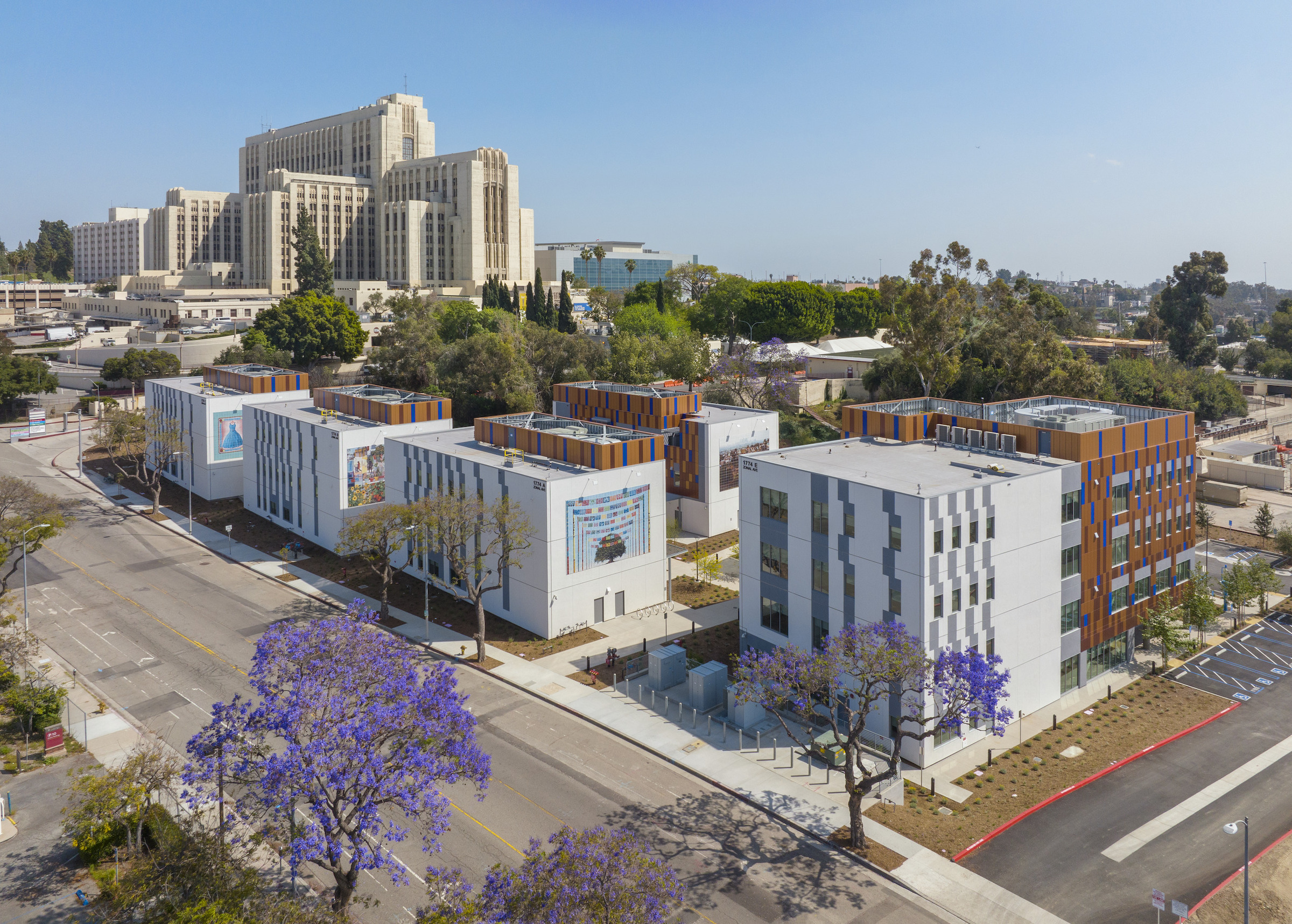
There’s also an uptick in demand for what’s known as Recovery Villages, that combine treatment of substance abuse and mental disease, and sometimes include a residential component. One example of this is the HKS-designed Arcadia Trails INTEGRIS Center for Addiction Recovery in Edmond, Okla., the first of its kind in the state. The $30 million 60,000-sf facility—which offers integrated treatment for drug and alcohol addiction, mental health and emotional trauma—features an inpatient residence wing, customized outpatient therapy spaces, a conference center, and landscaped courtyard. The site, which borders a wooded area, was designed to cultivate a “uniquely serene retreat,” says HKS.
CannonDesign has worked on Recovery Villages, too, say Adams and Rommel. These include a five-building campus in San Mateo, Calif., for the Cordilleras Health System. This is the state’s first net-zero mental health campus, and four of its buildings are dedicated to mental rehabilitation. This campus offers supportive housing. Another such project is The Los Angeles County + USC Restorative Care Village, whose first phase opened in the summer of 2021. It includes onsite housing, psychiatric medical support, job training, and other services.
Combatting a negative stigma of behavioral healthcare
The first private mental health hospital in the U.S., known as the Asylum for the Relief of Persons Deprived of the Use of Their Reason, was opened in 1817 by a group of Quakers in Philadelphia. Over the following 200-plus years, clinics and hospitals, with some exceptions, tended toward the institutional, as society categorized mental illness as a sign of insanity, criminality, or both. That stigma persists today in the debate about how to respond to rampant homelessness and mass shootings.
Lately, there is more consensus around design as a curative element. “Society is becoming more open to identifying mental [disorders] as a true illness, and anytime you can create a home-like setting, it’s better,” says John Galassini, Operations Manager for the GC Robins & Morton in Nashville. J.E. Dunn’s Vande Krol has observed a trend toward creating more “sensory opportunities” for patients via rooms with sound machines and calming images that help re-establish the patient’s normal state.
Galassini and other AEC sources agree that patient safety is still the primary concern of any design. Robins & Morton recently started a project for Community Health System in Franklin, Tenn., that is renovating one of its wings for adult behavioral healthcare, and the biggest challenge, says Galassini, is patient protection: cabinets and closet spaces are minimized, no hard corners or acoustical ceilings that can be pulled down, and so forth.
RELATED CONTENT
- NBBJ kicks off new design podcast with discussion on behavioral health facilities
- Balancing beauty, dignity, and safety in behavioral health facilities
- Balfour Beatty launches mental health hotline for at-risk employees
Safety design focused on preventing patients from injuring themselves has been extended to limiting the need for restraint by normalizing the healthcare environment for the patient, in part through what Rachael Farrell, chair of mental and behavioral health for HKS in Dallas, calls “positive distractions,” such as art and access to the outdoors. One of HKS and Robins & Morton’s projects, Rusk State Hospital, a psychiatric facility in West Texas with 100 beds, includes an interior courtyard with active recreational spaces (patients can add to a mural), and an exterior courtyard with meditative spaces that allows for intimate conversations.
“We’re trying to provide patients with greater control and choice without endangerment,” adds Brian Giebink, HDR’s Behavioral Health Practice Leader in Minneapolis. Such measures include dimmable lighting and “transition pods” for patients’ levels of improvement.
A Building Team led by LEO A DALY in early 2022 started construction on a $91 million 144,000-sf mental health clinic for the U.S. Department of Veterans Affairs in Tampa, Fla. The clinic’s design engages nature via gardens and walking paths, and indirectly with natural light coming through windows and clerestories.
Sheppard Pratt Baltimore/Washington, a 156,000-sf, 85-bed psychiatric facility designed by CannonDesign, that opened in August 2021, is built into a wooded area, and natural light fills every room and corridor. Last June, Rommel and Dr. Harsh Trevidi, the Sheppard Pratt health system’s CEO, spoke at the Design for Mental Health conference in the United Kingdom, touching on how the hospital’s design contributes to patient and family dignity, safety and healing, the utilization of park-like settings in the healing process, the importance of natural light and outdoor access, and future opportunities for research in mental health facility design.
Building products catching up to demand
AEC firms involved in designing and building mental health clinics and hospitals have been frustrated by the lack of products suited to this typology’s unique needs. “We’ve struggled with the products that were available, as there was a lack of investment by manufacturers” for the mental health sector, says HKS’s Farrell. Galassini of Robins & Morton adds that fixtures, wall devices, and other products suggested or mandated by regulations and guidelines “are not common items,” and therefore have longer lead times.
Part of the problem, say AEC sources, has been that guidelines and product testing lagged design trends and less intrusive treatments. As they catch up, codes for such products as furniture and hardware are clarified. “There’s more than one way to achieve safety than pulling products from a prison catalog,” says Nathan Howell, AIA, NCARB, LSSYB, Vice President and cochair-mental and behavioral health for HKS.
HDR has created a mental health advisory coalition that brings together experts, suppliers, healthcare staff, and regulators. “There are still gaps, but the suppliers are finally coming around,” says Giebink.
A future for behavioral health that incorporates research
Across the mental health horizon, “awareness is changing,” asserts CannonDesign’s Adams. HKS’s Farrell also sees “a lot of momentum” toward this continuum of care. And the programming in newer facilities seems more encompassing. Last fall, Balfour Beatty completed construction of the Virginia Center for Behavioral Rehabilitation on 28 acres in Burkeville, a 190,000-sf, 648-bed facility dedicated to the treatment of civilly committed, sexually violent predators. The building includes a large, centralized Treatment Mall with activity spaces for gardening, treatment, education, vocational training, exercise and leisure for up to 300 residents. Technology monitors resident movement.
Regulations and staff shortages, particularly in rural markets, remain impediments. But several forces are likely to drive this sector’s growth. HED’s Jaeger expects the bigger healthcare systems to meet most regional needs by expanding their mental health services. (He adds that his firm has associates in Boston and Detroit who are responsible for tracking mental health design trends.)
J.E. Dunn’s Vande Krol anticipates “lots of variations” in what gets built. He would like to see more walk-in clinics that are closer to where people live and might help to overcome negative stigmas.
When asked about the future, Stantec’s Sell mentions Stella’s Place, a free walk-in clinic inside a former factory in Toronto that opened last summer and provides mental health services for young adults (ages 16 to 29). There, a patient can get counseling from a professional or peer. It also has a coffee shop.
Several AEC sources also are seeing signs of a connection between mental healthcare and clinical research. One of Perkins&Will’s design projects is the state-owned John S. Dunn Behavioral Sciences Center at UTHealth Houston, which opened a year ago with 264 beds. Davis suggests this could be the largest teaching hospital for mental health in the country. “It’s important for clients to send a message about care and research,” she says.
Giebink of HDR thinks that “it’s only a matter of time” before the already established link between healthcare and research “extends to mental health.”
Related Stories
Healthcare Facilities | Dec 20, 2022
Designing for a first-in-the-world proton therapy cancer treatment system
Gresham Smith begins designing four proton therapy vaults for a Flint, Mich., medical center.
Cladding and Facade Systems | Dec 20, 2022
Acoustic design considerations at the building envelope
Acentech's Ben Markham identifies the primary concerns with acoustic performance at the building envelope and offers proven solutions for mitigating acoustic issues.
Sponsored | Resiliency | Dec 14, 2022
Flood protection: What building owners need to know to protect their properties
This course from Walter P Moore examines numerous flood protection approaches and building owner needs before delving into the flood protection process. Determining the flood resilience of a property can provide a good understanding of risk associated costs.
Healthcare Facilities | Dec 14, 2022
In Flint, Mich., a new health center brings together children’s mental and physical health services
Families with children who experience behavioral health issues often have to travel to multiple care facilities to see multiple teams of specialists. In Flint, Mich., the new Center for Children’s Integrated Services at Genesee Health System (GHS), a public mental health provider, brings together all of the GHS children’s programs, including its behavioral health programs, under one roof. It provides families a single destination for their children’s mental healthcare.
Adaptive Reuse | Dec 9, 2022
What's old is new: Why you should consider adaptive reuse
While new construction allows for incredible levels of customization, there’s no denying that new buildings can have adverse impacts on the climate, budgets, schedules and even the cultural and historic fabrics of communities.
Healthcare Facilities | Nov 17, 2022
Repetitive, hotel-like design gives wings to rehab hospital chain’s rapid growth
The prototype design for Everest Rehabilitation Hospitals had to be universal enough so it could be replicated to accommodate Everest’s expansion strategy.
Seismic Design | Nov 16, 2022
SPC-4D: 7 reasons California hospital building owners should act now to meet seismic compliance
Seismic compliance with the applicable California building codes is onerous and disruptive for building owners, especially for a building in the heavily regulated sector of healthcare. Owners of older buildings that house acute care services have a big deadline on the horizon—Jan. 1, 2030, the cutoff date to upgrade their buildings to SPC-4D.
BAS and Security | Oct 19, 2022
The biggest cybersecurity threats in commercial real estate, and how to mitigate them
Coleman Wolf, Senior Security Systems Consultant with global engineering firm ESD, outlines the top-three cybersecurity threats to commercial and institutional building owners and property managers, and offers advice on how to deter and defend against hackers.
Giants 400 | Oct 6, 2022
Top 60 Medical Office Building Contractors + CM Firms for 2022
PCL Construction, Adolfson & Peterson, Swinerton, and Skanska USA top the ranking of the nation's largest medical office building (MOB) contractors and construction management (CM) firms for 2022, as reported in Building Design+Construction's 2022 Giants 400 Report.
Giants 400 | Oct 6, 2022
Top 50 Medical Office Building Engineering + EA Firms for 2022
Jacobs, Gresham Smith, KPFF Consulting Engineers, and IMEG Corp. head the ranking of the nation's largest medical office building (MOB) engineering and engineering/architecture (EA) firms for 2022, as reported in Building Design+Construction's 2022 Giants 400 Report.


